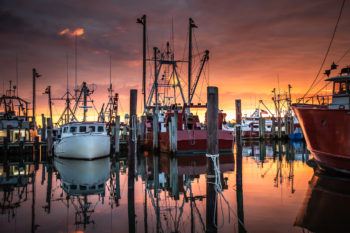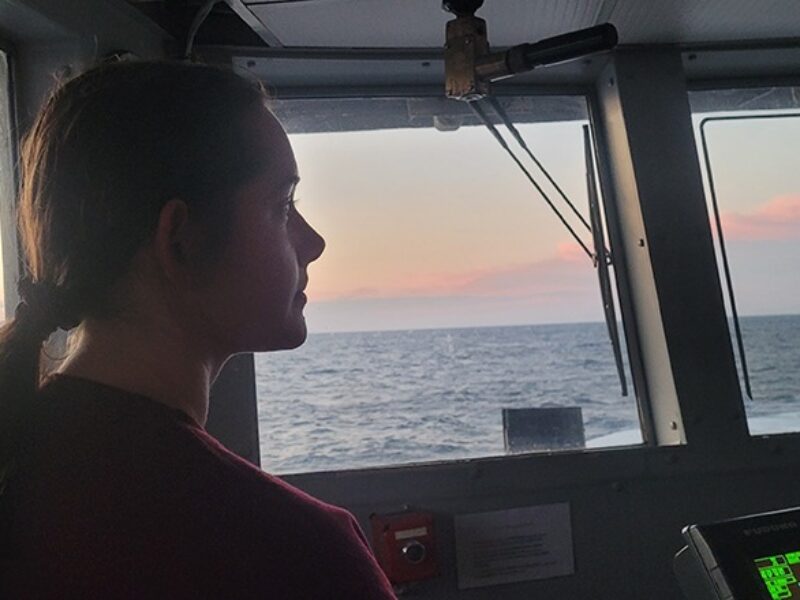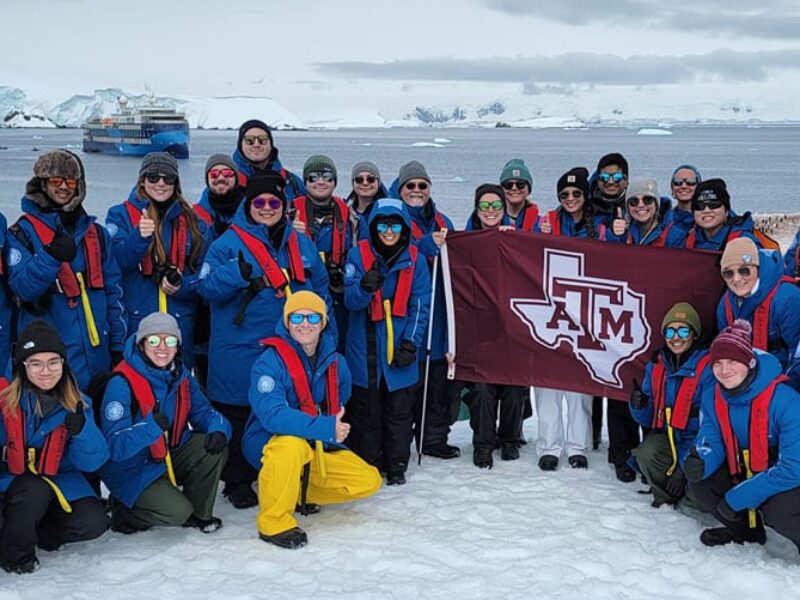Texas A&M Oceanographer Co-Leading NOAA Research Task Force

Texas A&M University’s Colleen Petrik*, assistant research professor in the Department of Oceanography, recently began leading three new research projects supported by nearly $800,000 in funding from the National Oceanic and Atmospheric Administration (NOAA).
This work is part of a much larger program that includes multiple studies conducted across several institutions to make up the Modeling, Analysis, Predictions, and Projections (MAPP) Marine Ecosystems Task Force. NOAA’s MAPP Task Forces are projects conducted by 30-40 researchers, aiming to create a synergistic web of similarly themed research that can help improve NOAA services. The research projects will span the next three years.
Petrik has been chosen as one of the new MAPP Marine Ecosystems Task Force leaders. Petrik and her team will use Earth system modeling to predict how short- and long-term changes in climate and oceanic conditions affect fisheries.
“To predict the weather, we use sophisticated models of the atmosphere that that are based on physics,” Petrik said. “We use very similar models now to simulate the entire Earth system.”
These models allow scientists to know how elements like the atmosphere, oceans and ice interact and affect each other, moving forward in time and across locations, she said. One of the research projects proposes to extend currently available Earth system models to include fish in order to predict fish distributions, food web structure, and potential fisheries catches.
The other two studies will examine the predictions made by simulations on seasonal to decadal time scales of physical and biological properties not currently under investigation. These properties include subsurface variables (e.g. oxygen concentration, sinking organic matter, seafloor temperature) and the prey of juvenile fish (zooplankton).
“This project is aimed at studying those new Earth system model predictions and seeing how well they predict the physical and biological properties of the ocean that affect fish,” Petrik said. “That might be things like temperature, that affects all living things; and how well they predict plankton, the base of the food web for higher things on the food chain like fish.”
Later, Petrik will work with her co-leads and other researchers in the task force to bring the results of all the different projects together. They hope to collate their work into a review that encompasses the task force’s findings and assesses to what extent the projects have moved marine ecosystem science forward.
Another co-leader of the task force, Michael Jacox, a research scientist with NOAA’s Southwest Fisheries Science Center and a member of the previous MAPP Marine Predictions Task Force, will be heading one of the other research projects.
“We’re going to be using climate forecasts produced by U.S. and international climate modeling centers to see when they do a good job of predicting ocean conditions off the West Coast and relate that back to conditions in the tropics,” Jacox said.
These predictions could then be used to understand what fish do and where they go in response to different conditions. Jacox said the Marine Ecosystems Task Force is adding to and building off the findings of the Marine Predictions Task Force.
“The end goal is to get information about the climate incorporated into decision-making, to improve both the economics and environmental impacts of fisheries,” he said.
Petrik said this work with NOAA “not only has a direct line to management decisions currently, but can also shape the direction of NOAA’s research in the next few years.”
* This link is no longer active and has been removed.
Media contacts:
- Robyn Blackmon, College of Geosciences, robynblackmon@tamu.edu
- Leslie Lee, College of Geosciences, leslielee@tamu.edu





